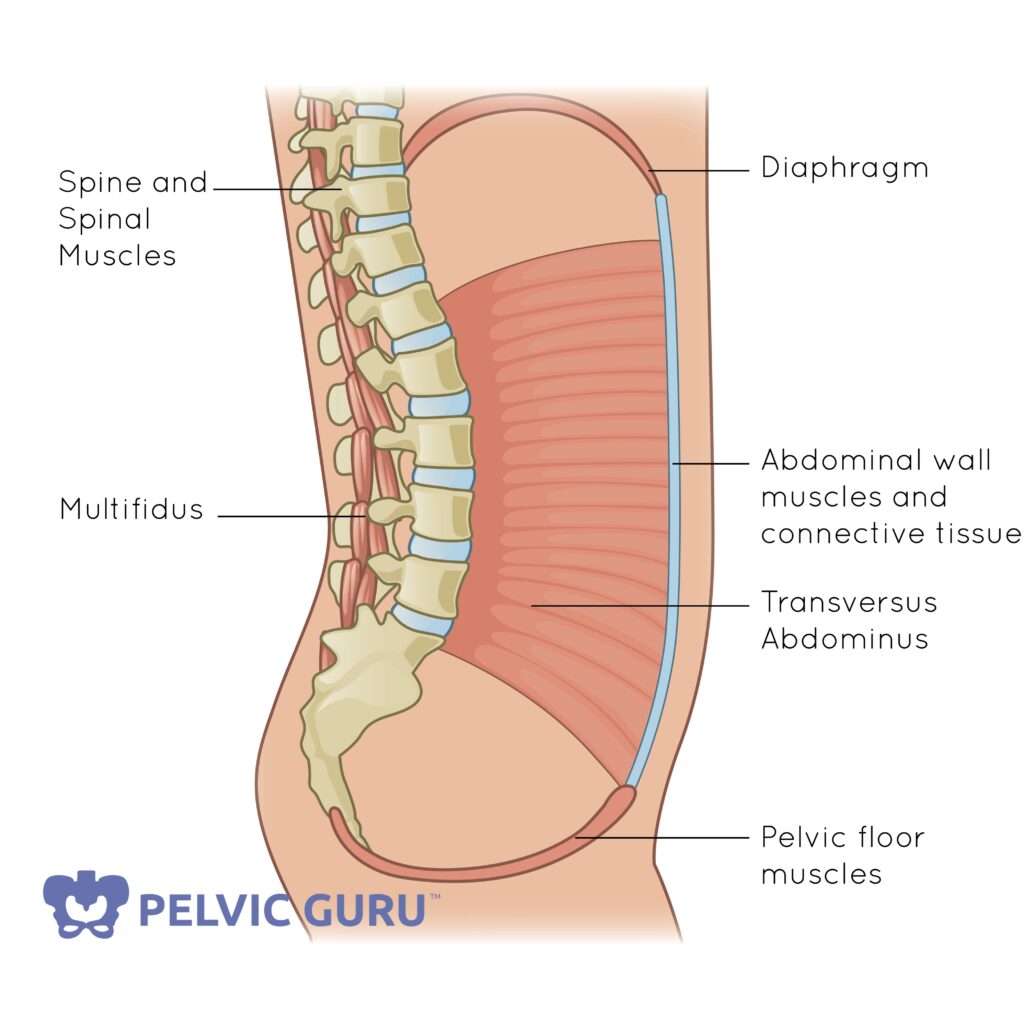Foot to Floor Series 3 of 5: How posture can cause pelvic floor dysfunction (and vice versa)!
This is the 3rd of a 3 part series on how the foot and leg can cause and/or affect pelvic floor conditions. #1 covered leg alignment and foot arch. #2 touched on toe and ankle mobility. You may wonder how does posture fit here?
What is “neutral”?

Note: This pic is not entirely accurate. See the pictures of the model. While this represents the musculature, in anatomy, the tailbone is higher and the pelvic floor is more in the back of the body. I still included this to represent how posture would change the pull of the muscles and therefore, how they function and where the body holds the weight of the upper body.
Neutral is different for everyone based on mobility, anatomy, shape, etc. Neutral is ideally the position where the body can most effectively distribute force, balance the weight of the upper and lower body, and stabilize the foundational component of our mobility (the “core”).
How do I know what is neutral for ME?
To know for sure, seek help from a specialist. If you have pelvic floor disorder, this would be a pelvic Physical Therapist. A pelvic PT can address not only neutral, but how your whole body manages pressure, force, strength, and balance.
Many of us tilt our bums under too much. Neutral should put the tailbone up slightly. Look at the line of your pants in the mirror. If it is flat (horizontal), then you may be tilted under too much. Ideally, the back should be slightly higher than the front. The amount that it is higher is different for everyone, and while your joints and muscles may need to get used to this slowly, it should not be painful.
Posture of the pelvis for the pelvic floor:
There are several ways posture contributes to pelvic floor conditions (see post about DRA, and look for one specifically on this topic in the future). After reading post #2, you can see how important hip extension is in being able to push the body forward, support the bony pelvis, and assist in pelvic floor strength and coordination. There are two ways we can do hip extension:
- The leg moving behind the body (see post 2)
- The pelvis moving on the leg – The focus of this post
If you have a posture like millions of us do, in which your bum is tucked under, sitting on the tailbone, and the spine takes on a c-curve, this will change the way pressure is ideally managed in the body. See the picture above and imagine the pelvis/bum tucked under. This results in a lengthening in the back and shortening in the front. This will strain the back and increase pressure on the organs of the abdomen and pelvis. Also, when the bum is tucked, it increased the strain on the hip flexors, and can cause chronic psoas, hip flexor and SI joint pain.
In a true neutral posture, the pelvic “floor” is actually located more in the back. Go ahead, reach around and feel where your tailbone is located right now…
The pelvic FLOOR should actually be called the pelvic BACK!
It is also possible to have too much curve in the lumbar spine and the bum tilted upwards. This will put the pressure of the upper body and organs too far forward, resulting in increased pressure on the urethra and bladder.
Why does “neutral” posture matter for the pelvic floor?
When asking the pelvic floor to carry the weight of the upper body and organs, it often responds with “nope”, and cannot sustain this, resulting in weakness, incontinence, prolapse, etc. (some people counter this pressure with even more pressure by over-contracting and clenching the pelvic floor, resulting in pelvic pain.)
Muscles are strongest in their middle position. Not too lengthened, not too shortened. The pelvis/lumbar spine helps determine this position for the pelvic floor.
How do these postures happen?
- Habit. it is easier to hang on our ligaments when we are tired. Who isn’t tired?
- Work stations. The way we sit at work, our desks, in front of the TV, computer, or our phones…
- Baby-carrying. Moms tend to swing a hip under and forward to provide a shelf to put their little koala bears.
- Someone told us to. We may have had a dance teacher, parent, or our own mirrors tell us we need to “tuck that bum in”, so we did…forever.
- Pain. Being in pain, regardless of where, tends to cause a pain posture that is basically the fetal position. When in pain, we draw our pelvis and shoulders in, and hunch over. This is where we can get into the cycle of pain causes tightness and tightness caused pain.
It is important to address the root cause of the pain or dysfunction in order to address it completely.
In conclusion:
There are many ways posture can cause or effect the pelvic floor. If you think you may be a bum tucker, have trouble finding “neutral” posture, or have other concerns regarding the strength of the pelvic floor or trunk, consult your physical therapist.
Look for the next 2 posts, they will address fascia and the brain (favorites!)
